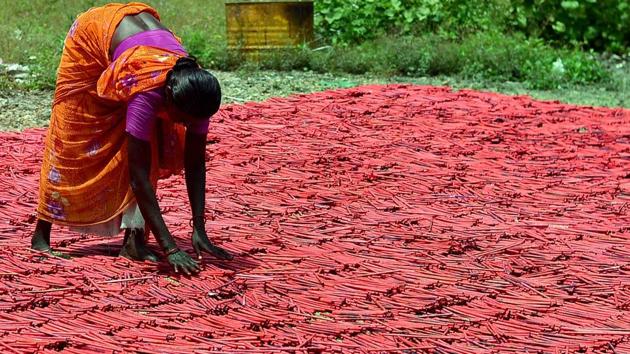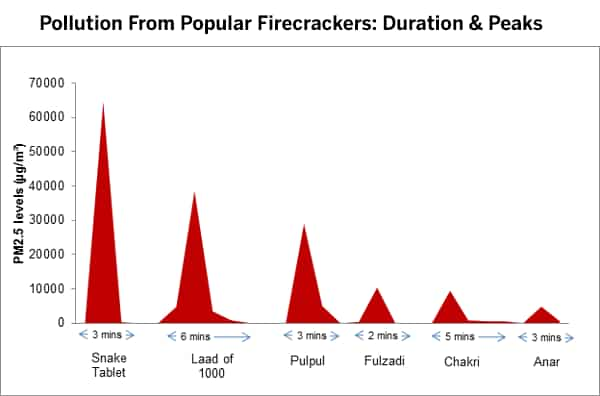As SC ban on sale sparks debate, firecrackers emit toxins 200 to 2,000 times above safe limits
Children with weak immune and respiratory responses are especially vulnerable.
While a Supreme Court decision to ban the sale–not the use–of firecrackers for the 2017 Diwali season is proving contentious, the pollution generated by popular fireworks ranges between hundreds and thousands of times above safe levels.

Popular firecrackers, such as fuljhadis (sparklers), snake tablet, anar (flower-pot), pul pul (string sparkler), ladi or laad (strings of 1,000 crackers) and chakri (spinning firecracker) emit particulate matter (PM) 2.5 in levels 200 to 2,000 times the safety limit recommended by the World Health Organization (WHO), IndiaSpend reported on October 29, 2016.
The ban generated opposition, as this tweet from writer Chetan Bhagat illustrated.
Some saw it an issue of religious freedom, as this tweet from Tripura governor Tathagata Roy indicated.
(First Dahi handi and now firecrackers, maybe next time the ‘candle marching’ and ‘awards wapsi’ gang will cite the excuse of pollution and file a petition against lighting of pyre by Hindus.)
Some ridiculed the narrative to make it about preserving religious customs, as this tweet from Abhijeet showed.
Others, such as Puducherry lieutenant governor Kiran Bedi welcomed the ban.
The Supreme Court by the Chest Research Foundation of India, and students from the Interdisciplinary School of Health Sciences of the University of Pune measured particulate matter emitted by each firecracker from the distance they are usually lit; for example, the sparklers at a foot from the user.
The snake tablet produced the highest levels of PM 2.5, followed by the ladi, pulpul, fuljhadi, chakri and anar. Although the snake tablet burned only for nine seconds, it produced the highest peak PM 2.5 level of 64,500 µg/m3–2,560 times above WHO standards–while the ladi produced peak PM 2.5 levels of 38,540 µg/m3, 1,541 times over WHO standards.

(Yadavar is a principal correspondent with IndiaSpend.)
(Indiaspend.org is a data-driven, public-interest journalism non-profit/FactChecker.in is fact-checking initiative, scrutinising for veracity and context statements made by individuals and organisations in public life.)





